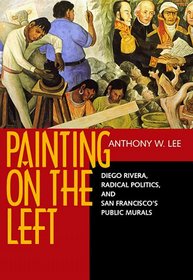Search -
Painting on the Left: Diego Rivera, Radical Politics, and San Francisco's Public Murals
Painting on the Left Diego Rivera Radical Politics and San Francisco's Public Murals
Author:
The boldly political mural projects of Diego Rivera and other leftist artists in San Francisco during the 1930s and early 1940s are the focus of Anthony W. Lee's fascinating book. Led by Rivera, these painters used murals as a vehicle to reject the economic and political status quo and to give visible form to labor and radical ideologies... more »
Author:
The boldly political mural projects of Diego Rivera and other leftist artists in San Francisco during the 1930s and early 1940s are the focus of Anthony W. Lee's fascinating book. Led by Rivera, these painters used murals as a vehicle to reject the economic and political status quo and to give visible form to labor and radical ideologies... more »
ISBN-13: 9780520211339
ISBN-10: 0520211332
Publication Date: 4/15/1999
Pages: 264
Rating: ?
ISBN-10: 0520211332
Publication Date: 4/15/1999
Pages: 264
Rating: ?
0 stars, based on 0 rating
Publisher: University of California Press
Book Type: Hardcover
Other Versions: Paperback
Members Wishing: 1
Reviews: Amazon | Write a Review
Book Type: Hardcover
Other Versions: Paperback
Members Wishing: 1
Reviews: Amazon | Write a Review
Genres:
- Arts & Photography >> Individual Artists >> ( P-R ) >> Rivera, Diego
- Arts & Photography >> Individual Artists >> General
- Arts & Photography >> History & Criticism >> General
- Arts & Photography >> History & Criticism >> Regional >> United States




